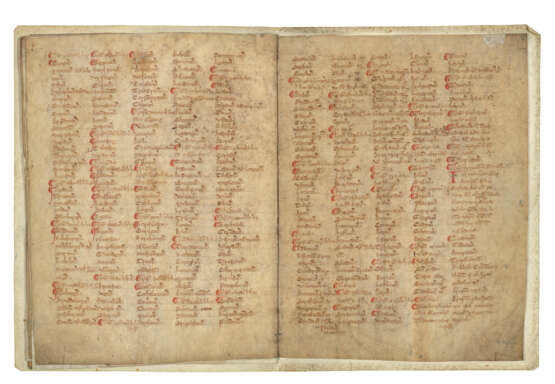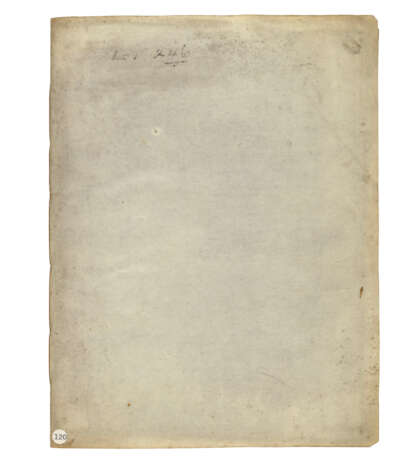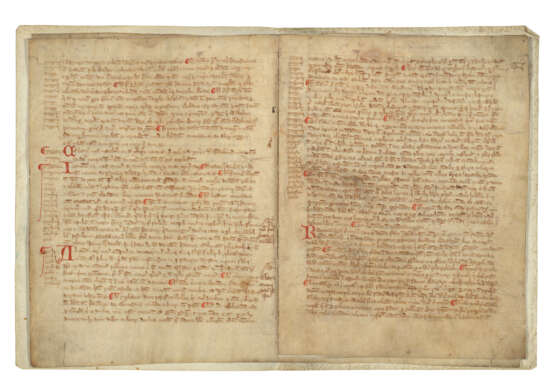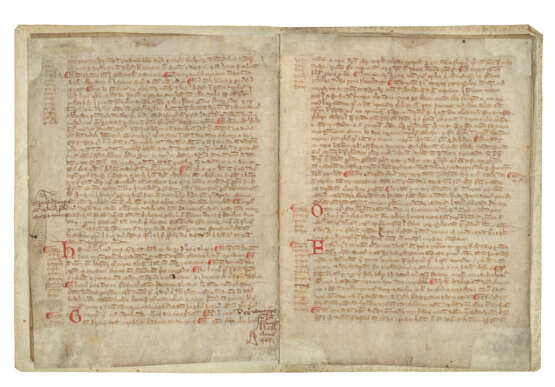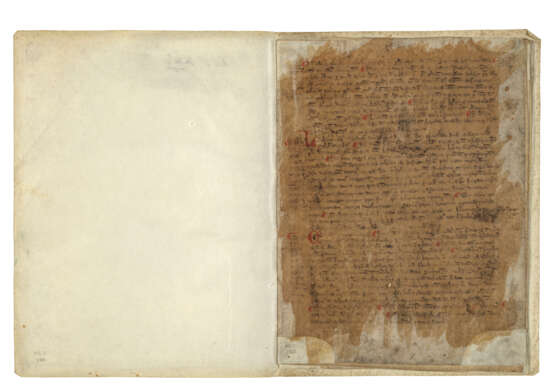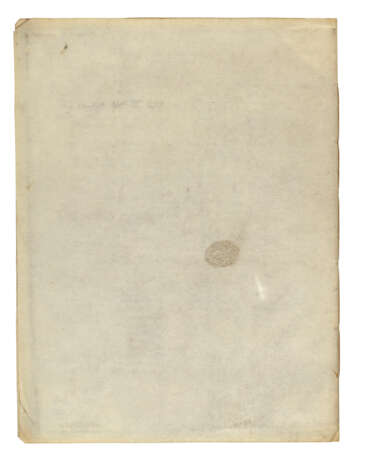ID 869489
Lot 83 | Martin of Opava (d. 1278/9)
Valeur estimée
£ 4 000 – 6 000
Chronicle; and a List of bishoprics, in Latin, manuscript on vellum [England, late 13th century, with early 14th century additions].
A substantial portion of an English copy of one of the most popular medieval chronologies.
c.215 × 165mm. Single gathering of 8 leaves. The first text in a single column of 36–41 lines in cursive script, the second text in five columns of 38 lines (the first leaf treated with a chemical causing darkening of the parchment and increased legibility of the text, the final page very worn and difficult to read, some leaves with repaired corners or gutter), bound in a plain vellum wrapper.
Provenance:
(1) An early English hand added marginalia drawing attention to passages concerning Peter Comestor, Thomas Becket, the foundation of the Franciscan and Dominican Orders, the canonizations of Francis and Clare, Thomas Aquinas, and Hugh of St-Cher, suggesting ownership by a mendicant foundation.
(2) The front cover is inscribed in a 20th-century hand ‘Lot 246’.
(3) Colker MS 120; acquired in 1966 from Maggs.
Contents:
Martin of Opava (or 'of Poland', ‘of Troppau’, or ‘Strebsky’), Chronicon pontificum et imperatorum, f.1, with continuations, ff.5v–6; ‘Isti sunt episcopi sub Roma non pontifice qui non sunt in alterius provincia constituti’, f.6v–8v.
The Chronicle in the present manuscript starts imperfectly: the Emperors appear to begin in the middle of the reign of Henry V (d.1125) and the first pope is Anastasius IV (1153–54); it extends to the death of King Louis in 1270 and the accession of Pope Nicholas III in 1277, where Martinus Polonus’s text ends. Later continuations seem to have been made in at least two stages. One scribe, who left spaces for coloured initials, added entries for Popes Nicholas III and Martin IV (d. 1285) below the end of the King Louis text (f.6r). Another scribe, who did not leave spaces for initials, later added entries for Popes Honorius IV–Clement V, the latter including his condemnation of the Knights Templars in 1311, below the end of Nicholas III (f.5v). The length of Clement V’s reign (which ended in 1314) is in darker ink, suggesting that he was still alive when his entry was written. It therefore seems likely that the main text was written between 1277 and 1285, and the continuations were added shortly after 1285, and between 1311 and 1314, respectively.
In the list of bishoprics, the English and Welsh sees are in the first two columns on f.8r, followed by Norway and Sweden, with the Scottish and Irish sees in the third and fourth columns.
Part of the huge success of Martin’s work was due to its layout: the list of popes and their deeds are on versos, with contemporary emperors on the facing rectos, and in the earlier copies each page covered a period of exactly 50 years in 50 lines of text; thus the entire text occupied only 26 leaves. The text was hugely successful and popular, especially in England: more than 440 medieval copies survive; it was translated at least twice into Middle English, and not only into European vernaculars including German, French, Italian and Castillian, but also Greek, Armenian, and Persian.
For a short introduction to the author, text, and English copies, see Wolfgang-Valentin Ikas, ‘Martinus Polonus’ Chronicle of the Popes and Emperors: A Medieval Best-Seller and Its Neglected Influence on Medieval English Chroniclers’, English Historical Review, 116 (2001), 327–41; for a detailed study see the same author’s Martin von Troppau (Martinus Polonus), O.P. (d. 1278) in England: überlieferungs- und wirkungsgeschichtliche Studien zu dessen Papst- und Kaiserchronik (Wiesbaden, 2002).
| Lieu d'origine: | Royaume-Uni |
|---|---|
| Catégorie maison de vente aux enchères: | Manuscrits médiévaux et de la Renaissance |
| Lieu d'origine: | Royaume-Uni |
|---|---|
| Catégorie maison de vente aux enchères: | Manuscrits médiévaux et de la Renaissance |
| Adresse de l'enchère |
CHRISTIE'S 8 King Street, St. James's SW1Y 6QT London Royaume-Uni | |
|---|---|---|
| Aperçu |
| |
| Téléphone | +44 (0)20 7839 9060 | |
| Commission | see on Website | |
| Conditions d'utilisation | Conditions d'utilisation |
